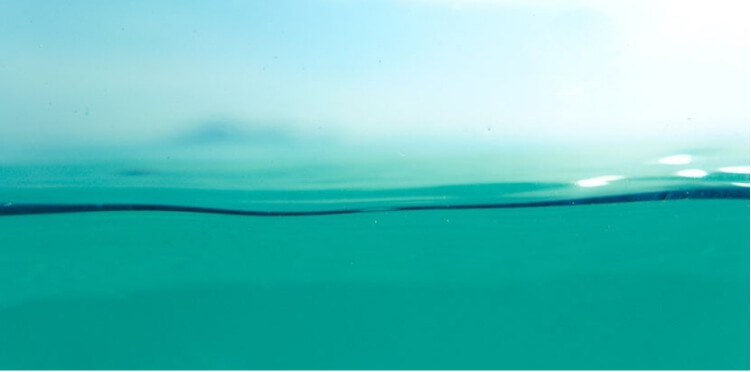Hyundai Motorstudio Senayan Park
Hyundai Motorstudio Senayan Park
Newsroom
The official news from Hyundai Motorstudio Senayan Park and a collection of innovative articles on mobility and sustainability here.
-
Negative Impacts of Carbon Emissions in Water Areas
- Hyundai Motorstudio Senayan Park Senayan Park 2022.07.01
-
Carbon pollution may change the chemical composition of water and reduce the ability to absorb CO2, increase acidity, and harm various ecosystems in the waters.
In particular, the oceans are the most affected because 30% of the world's carbon has been absorbed since the industrial era began. Even for the last decade, human activities have produced 40 gigatons of carbon due to utilization of fossil fuels.
Carbon emissions on water areas do not only affect the sea, but even domestic water sources. The main impact is to disrupt the water cycle, which is the basic need of living things.
Impacts of Carbon Emissions in Water Areas
Since the living things are so dependent on aquatic ecology, it is critical to understand the impacts of current carbon emissions in relation to drinking water supply, sanitation and energy production.
1. Algae Blooms
Carbon emissions trigger algae blooms in a number of waters, even in areas that have never been experienced before. Climate change due to carbon emissions warms waters, triggering an algae bloom that threatens aquatic habitats.
Algae not only destroys the sea water, but also pollutes rivers and lakes around the world. This natural phenomenon occurs because of the carbon in the waters is the fuel for algae growing sporadically.
Algae are dangerous for aquatic habitats because they produce toxins which have an economic impact. It’s limited the drinking water production, destroying tourist attractions, turning off fishermen's livelihoods, and reducing the quantity of any water products.
2. Melting Glaciers
The glaciers are not just an iceberg at the north or south poles, but chunks of ice at the top of the mountain. Mountains are a source of freshwater that irrigate various rivers.
Overall, mountains supply more than 50% of the world's fresh water. Normally, glaciers melt slowly and mountains will store the water so the earth has water reserves. But carbon emissions are making glaciers melt too fast, so water supplies are in danger.
Mountains are not able to store the water in large quantities because of insufficient storage capacity. Because mountains are unable to store water, the soil moisture level decreases and gradually loses its function as a source of clean water.
If a glacier melts, there is no way to restore it, so areas that used to depend on glaciers as a source of water will become dry.
3. Extreme Rainfall
There have been many studies that link extreme rainfall and carbon emissions which conclude that climate change is making heavy rains more intense, while triggering storms and floods in some areas.
Extreme rain triggers various negative impacts such as killing lives, damaging infrastructure, and destroying the economy. America's fourth largest economic loss even comes from natural disasters, particularly related to extreme weather.
Tropical storms, droughts, cyclones and flash floods are some disasters triggered by extreme rainfall, which is the effect of carbon emissions.
4. Drought
Carbon emissions make water areas dry and barren. Floods and droughts are actually natural phenomena that occur naturally, but carbon emissions break the cycle.
High temperature triggers water evaporation and plant transpiration to increase dramatically, which in turn makes water and plants disappear. High temperatures combined with low rainfall will reduce the water level.
It would take a few years before the waters turned into barren land, which have already occurred in various waters such as rivers, lakes, and swamps.
5. Climate Shift
Carbon emissions break down the water cycle and its absorption. The most notable impact is the intense drought in some areas that were once considered wetlands. With today's higher average temperatures and warmer air than before, the dry season will be much longer.
On the other hand, the rainy season becomes shorter but intense, often triggering floods. It has been happening for the past decade, and will get even worse in the next few decades.
6. Damaging the Water Cycle
Besides decreasing the air quality, the biggest impact of carbon emissions is reducing the level of fresh water availability. Apart from disrupting the water storage cycle, carbon emissions are responsible for the world's water supply.
Since water is a basic need, its impact will disrupt all segments. Domestic water supplies are clearly disrupted, as well as industries that using large amounts of water. Dams or artificial lakes may help water supply in the short term, but have no significant impact in the long term.
7. Fueling Greenhouse Gasses
Greenhouse gasses must be reduced immediately to prevent the climate change and protect water resources that are in danger. Tackling greenhouse gasses is closely related to what and how energy is managed and used.
In general, the energy sector is the main contributor to the greenhouse gasses, which is 72%. Besides the energy sector, foods such as meat and dairy contribute greatly to carbon emissions. For the world, meat and dairy produce 14.5% of the world's carbon emissions.
As already mentioned, carbon emissions trigger various negative impacts. So, being selective in consuming food means reducing carbon emissions. For humans, this simplest step can protect the environment.




